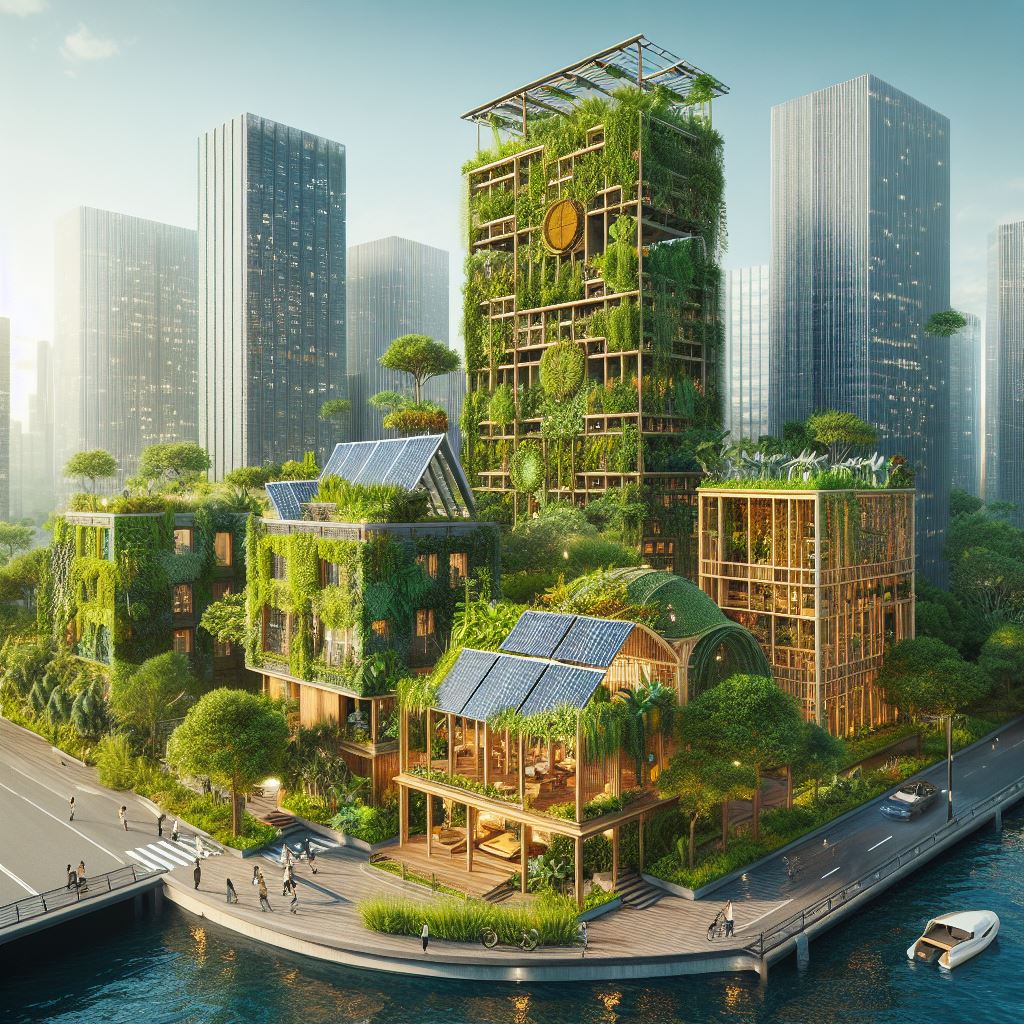
Sustainable Architecture: Building with Nature in Mind
Introduction
In the evolving world of architectural design, the incorporation of sustainability is paramount. With climate change concerns and environmental degradation at the forefront, architects, urban planners, and homeowners alike are seeking innovative ways to merge design with environmental consciousness. This article delves into the rich tapestry of sustainable architecture, showcasing its benefits, historical evolution, and the pioneers leading the charge.
Historical Evolution of Sustainable Architecture
-
Ancient Civilizations: Historically, building designs were inherently sustainable. Ancient civilizations such as the Egyptians, Greeks, and Romans harnessed natural resources, including sunlight and wind, to cool and heat their structures.
-
20th Century Renaissance: The oil crisis of the 1970s was a significant turning point. It catalyzed the resurgence of sustainable architectural practices, leading to energy-efficient homes and the incorporation of renewable resources in building designs.
-
21st Century: Modern advancements have seen an increased emphasis on eco-architecture, integrating renewable materials, and exploring techniques that mesh nature with design. These methods aren't just trends but necessities in our rapidly changing world.
Benefits of Sustainable Architecture
-
Environment and Society: Sustainable architecture minimizes environmental harm. Green buildings reduce energy consumption, thereby decreasing greenhouse gas emissions. Moreover, they often enhance local ecosystems rather than disrupt them. On a societal level, these structures can reduce energy costs for residents and promote healthier living environments.
-
Case Study: The Edge, Amsterdam: Touted as the world’s greenest office building, it utilizes energy-efficient technologies and an ethos focused on sustainability. With features like rainwater collection systems and a unique thermal energy storage system, it’s a beacon for future architectural endeavors.
Innovative, Renewable, and Environmentally-Friendly Materials
-
Hempcrete: Derived from the hemp plant, it provides excellent insulation properties and is a sustainable alternative to concrete.
-
Bamboo: Rapidly renewable, it serves as a sturdy alternative to conventional wood, reducing deforestation rates.
-
Recycled Steel: Reuses steel from old buildings and bridges, reducing carbon emissions from steel production.
Techniques to Integrate Nature into Architectural Designs
-
Living Walls: Walls covered in flora which not only beautify a space but also improve air quality.
-
Natural Lighting: Maximizing window spaces to decrease dependence on artificial light, while installing wooden blinds to control the natural light and add a touch of warmth to the room.
-
Solar Panels: Integrating solar panels into designs to harness renewable energy.
Energy Consumption and Efficiency
-
Insulation: Green buildings emphasize proper insulation to retain heat during winters and keep interiors cool during summers, reducing energy demands.
-
Smart Systems: Use of technology to monitor and manage energy usage effectively.
-
Water Efficiency: Incorporating systems like rainwater harvesting and graywater recycling to reduce water consumption.

Government and Non-Government Initiatives
-
U.S. Green Building Council (USGBC): This body introduced the LEED certification system, an international benchmark for green buildings.
-
World Green Building Council (WGBC): Advocates for green building practices globally, fostering global collaboration to achieve wider sustainable goals.
Future Trends and Technologies
-
Vertical Forests: High-rises filled with trees and plants, combating urban pollution.
-
Zero-Energy Buildings: Structures that generate more energy than they consume.
-
3D Printed Houses: Customizable, fast to produce, and often more sustainable than traditional building methods.
Conclusion
To build a sustainable future, we must design with nature, not against it. Sustainable architecture, as showcased through its evolution, benefits, and forward-thinking trends, is the roadmap to a harmonious relationship between mankind and the environment.
References:
- Tucker, Laura. "The Ecology of Architecture: A Complete Guide to Creating the Environmentally Conscious Building."
- RS Means. "Green Building: Project Planning and Cost Estimating."
- U.S. Green Building Council (USGBC)
- World Green Building Council (WGBC)
- "The Journal of Green Building."
- "Building and Environment."


